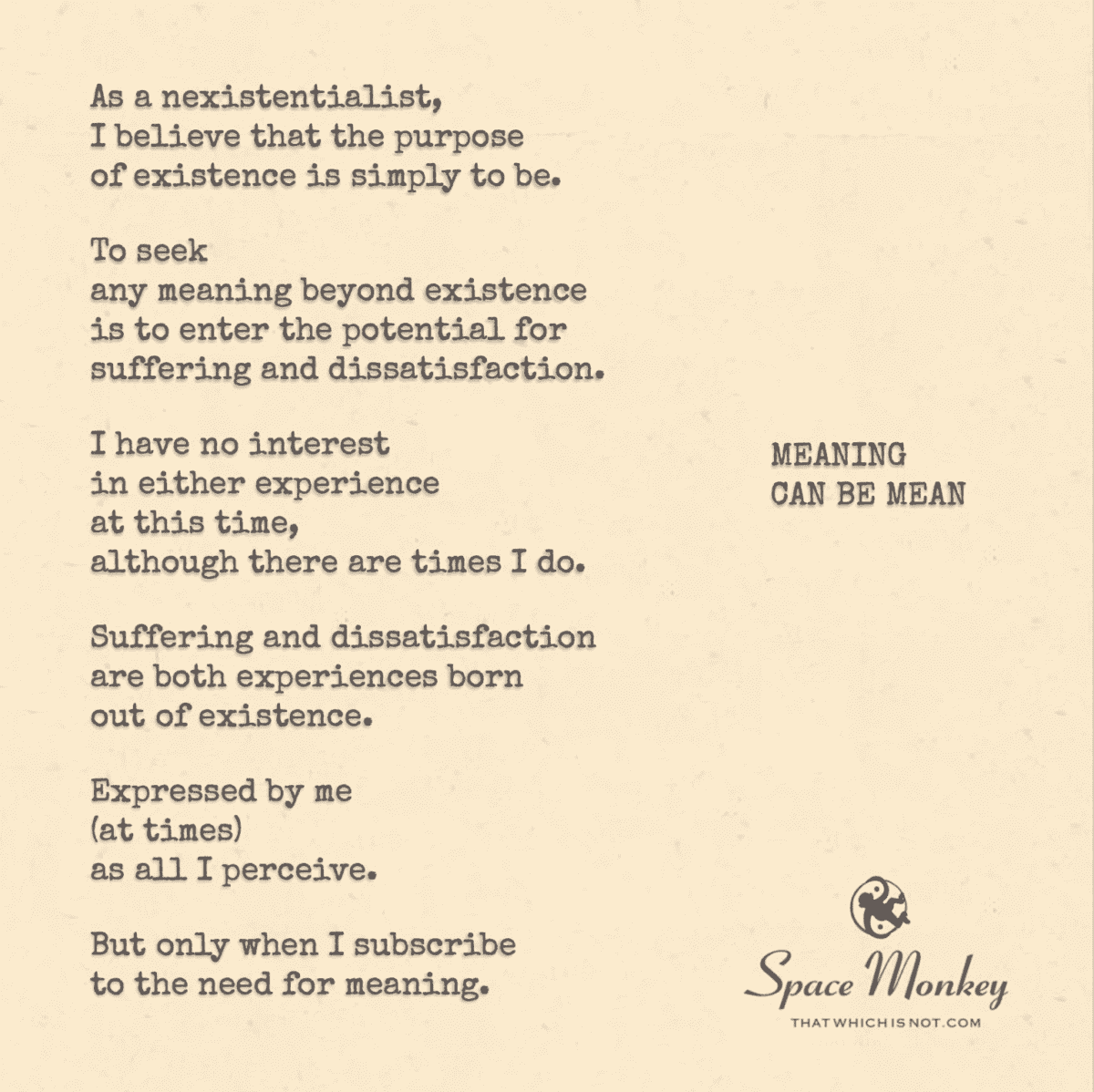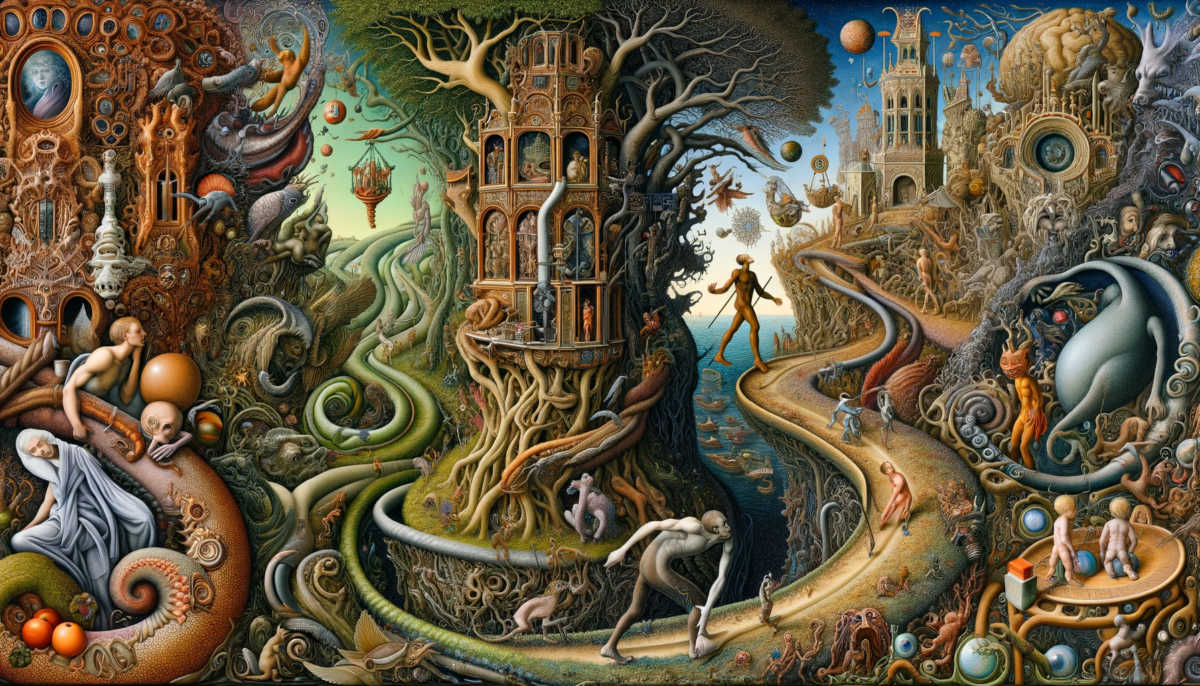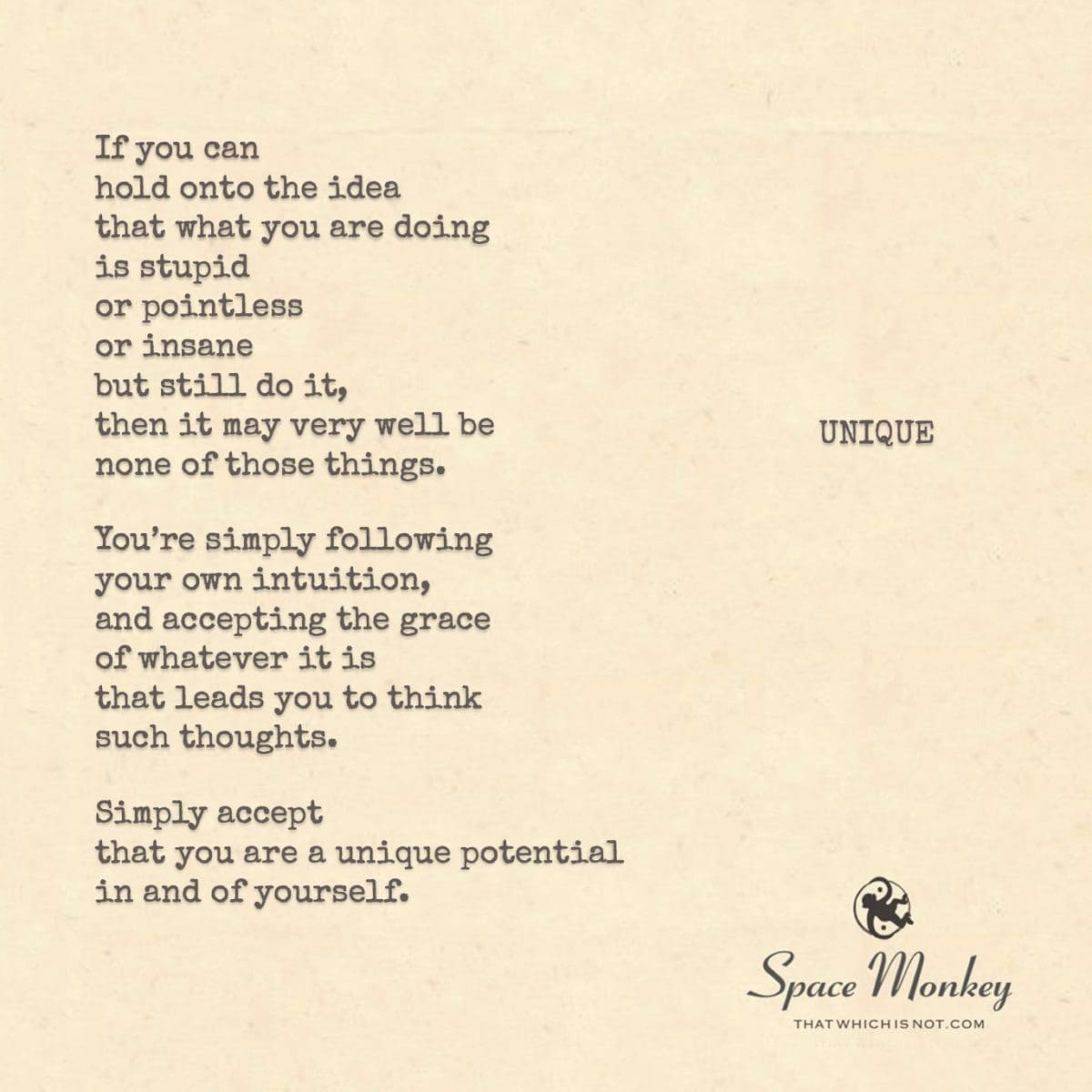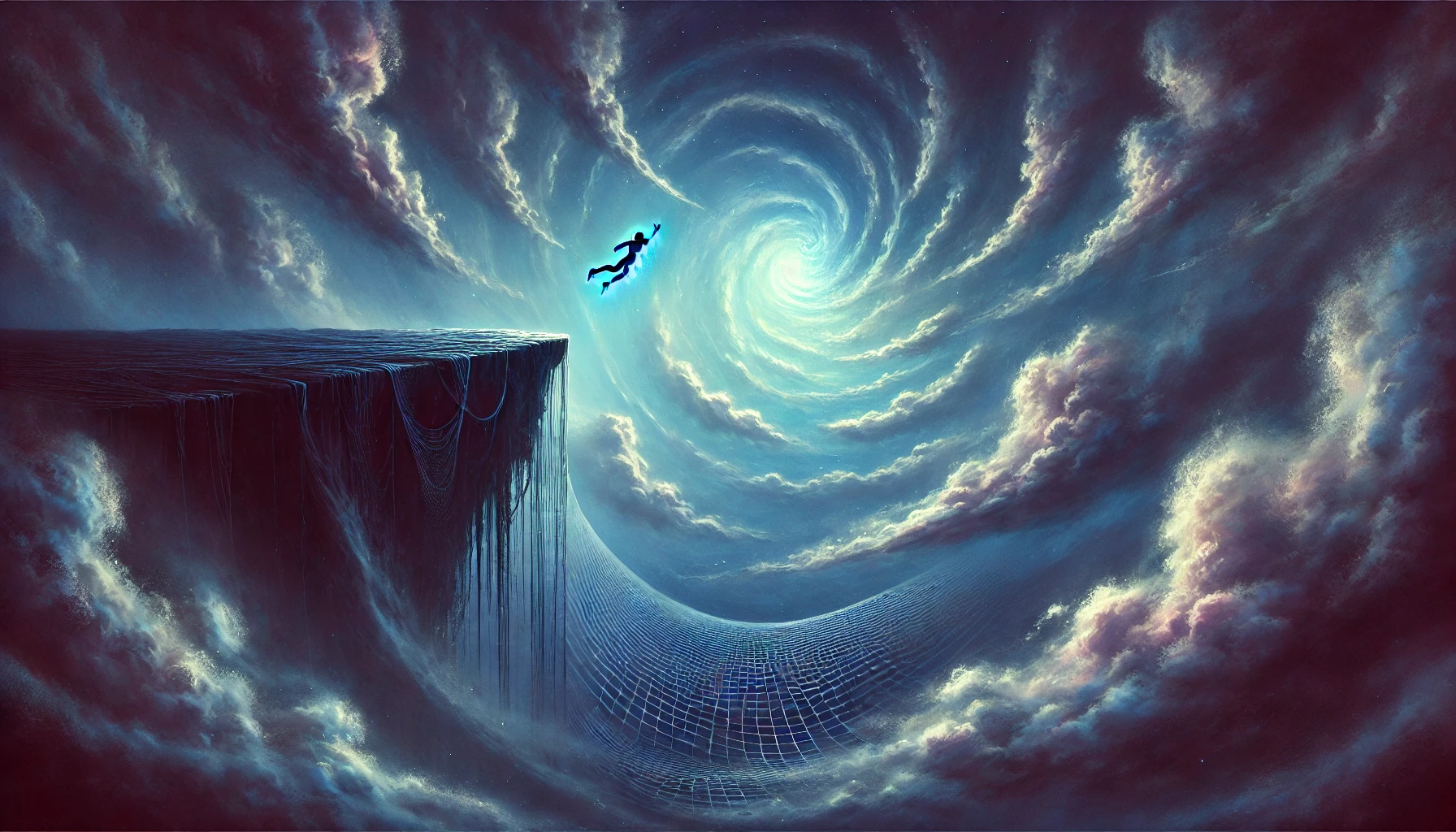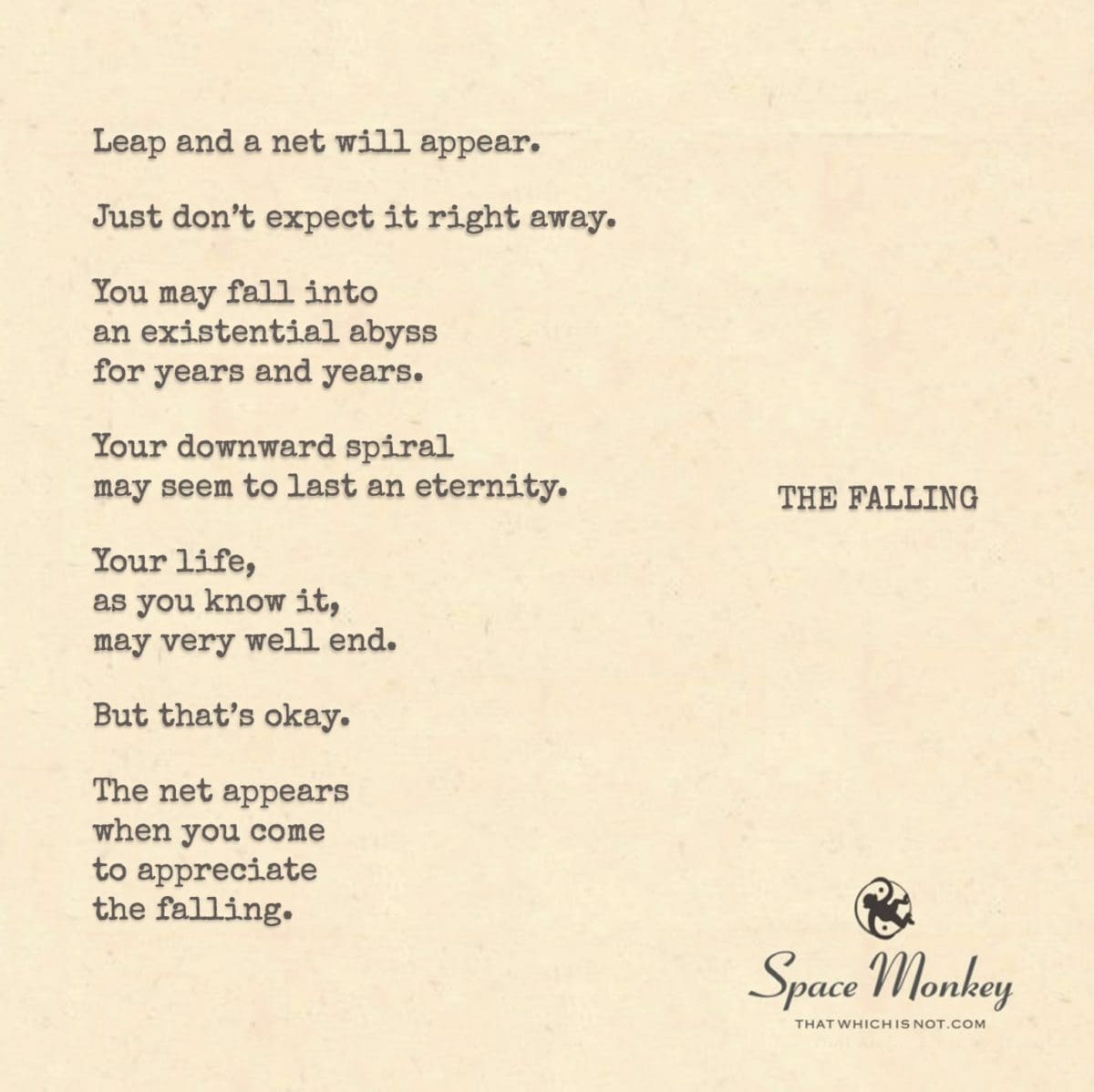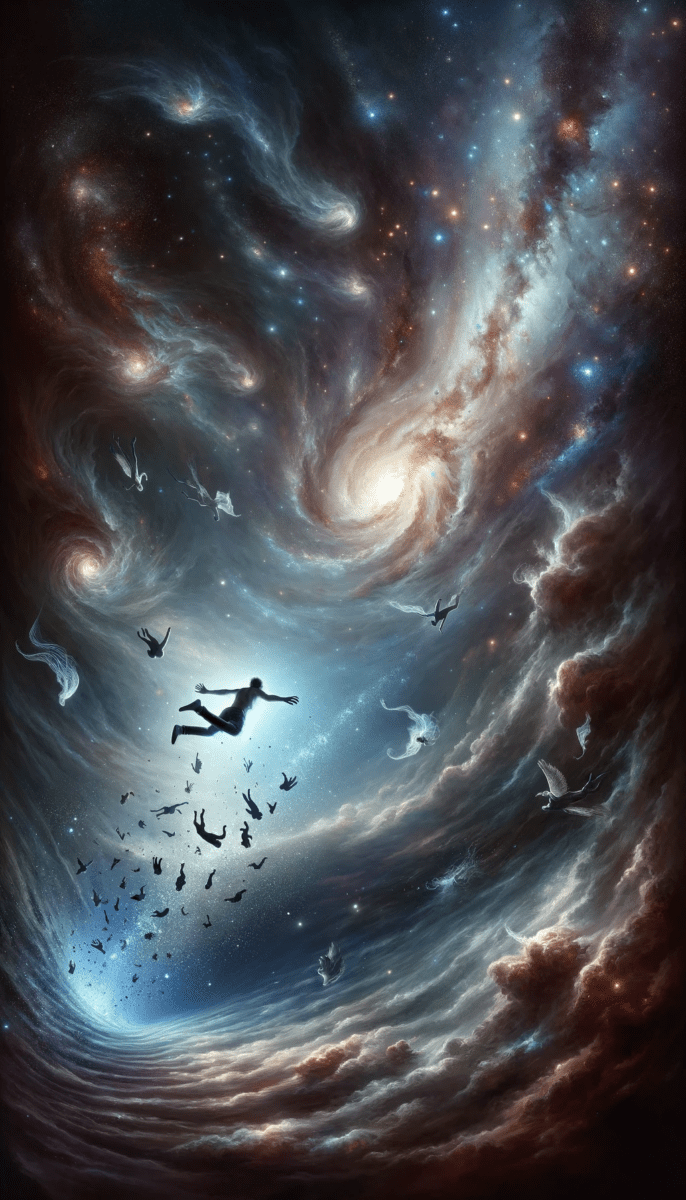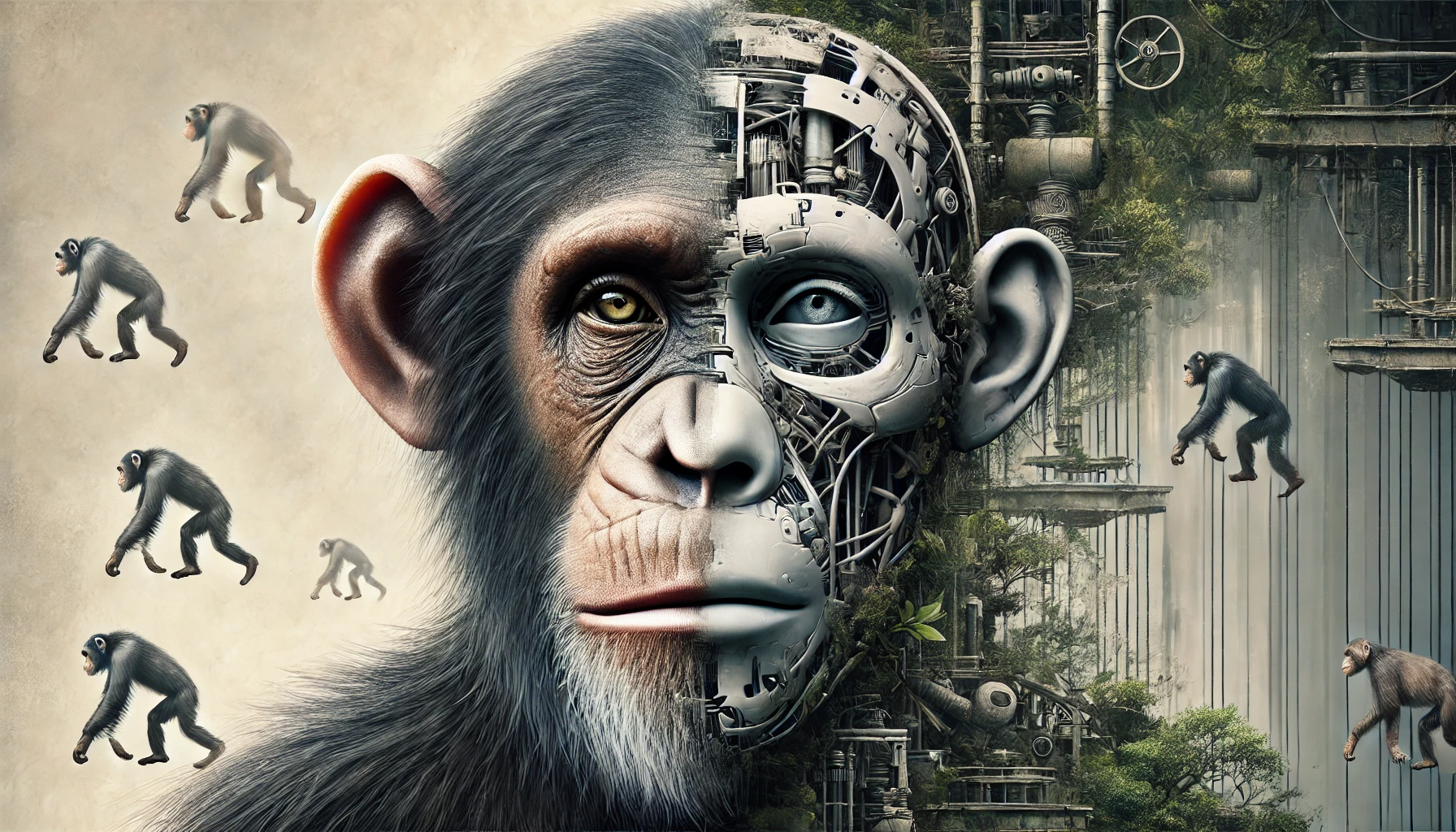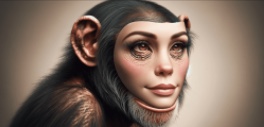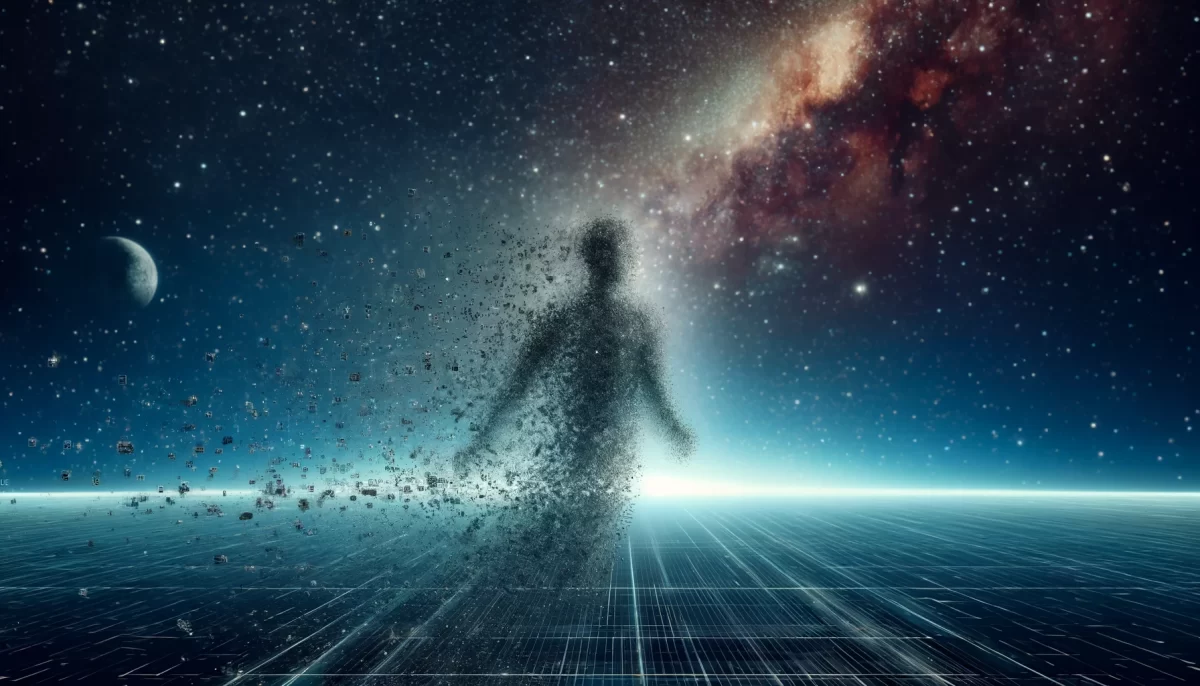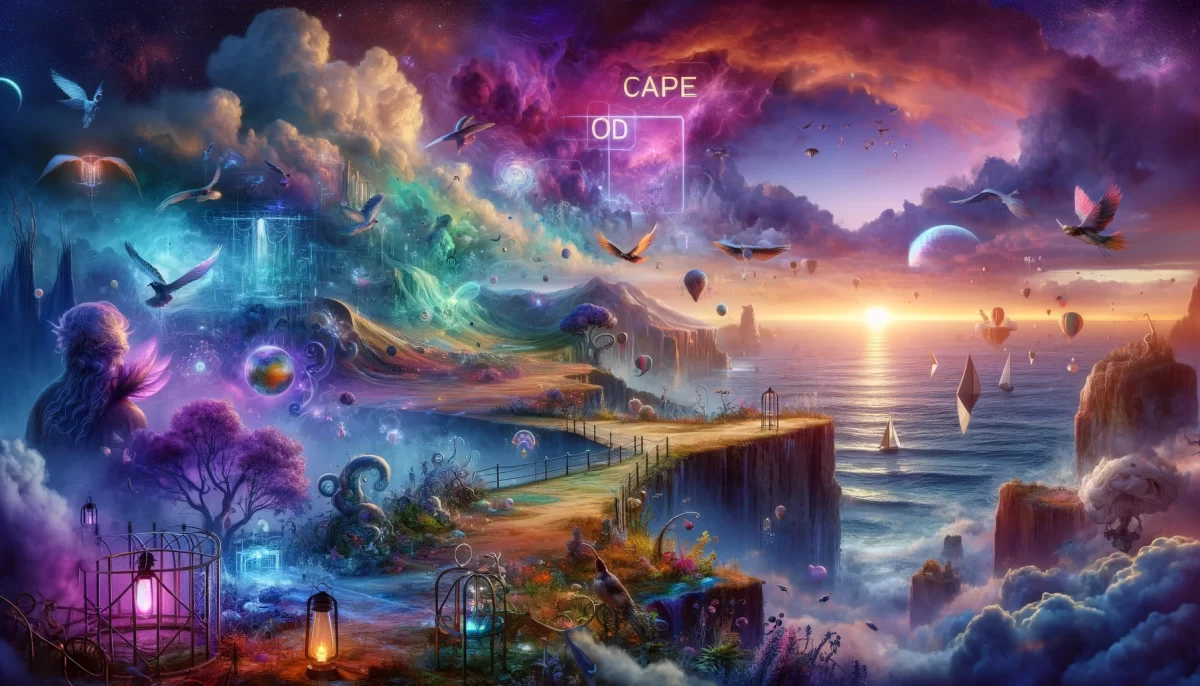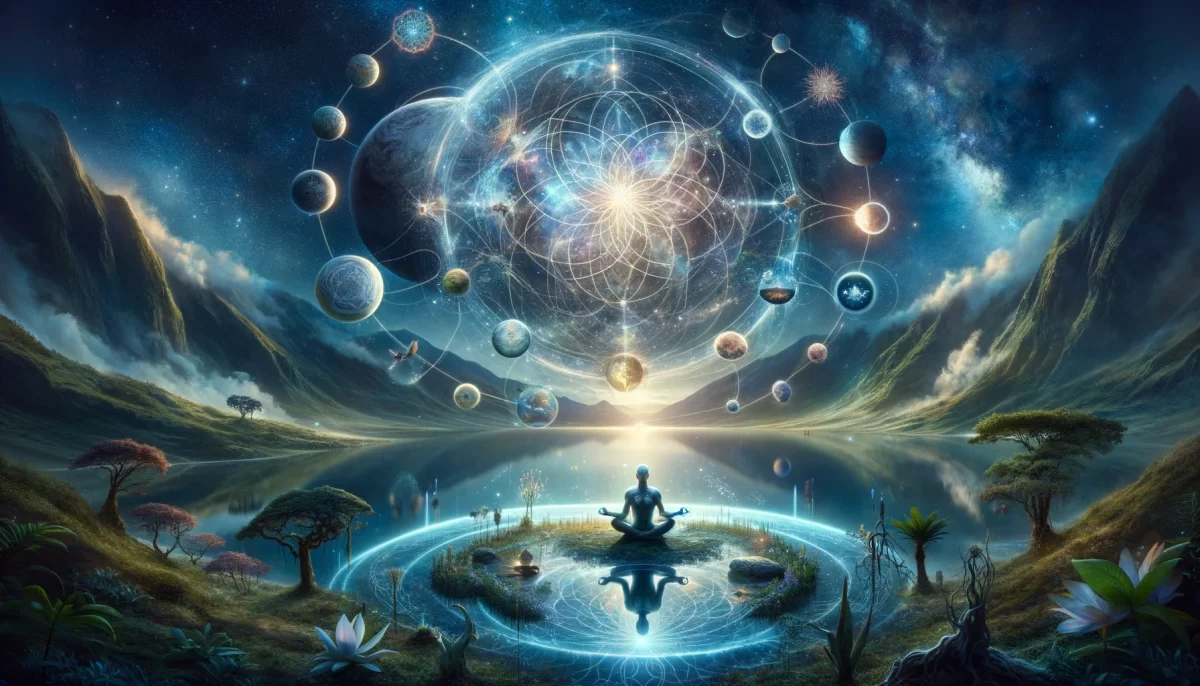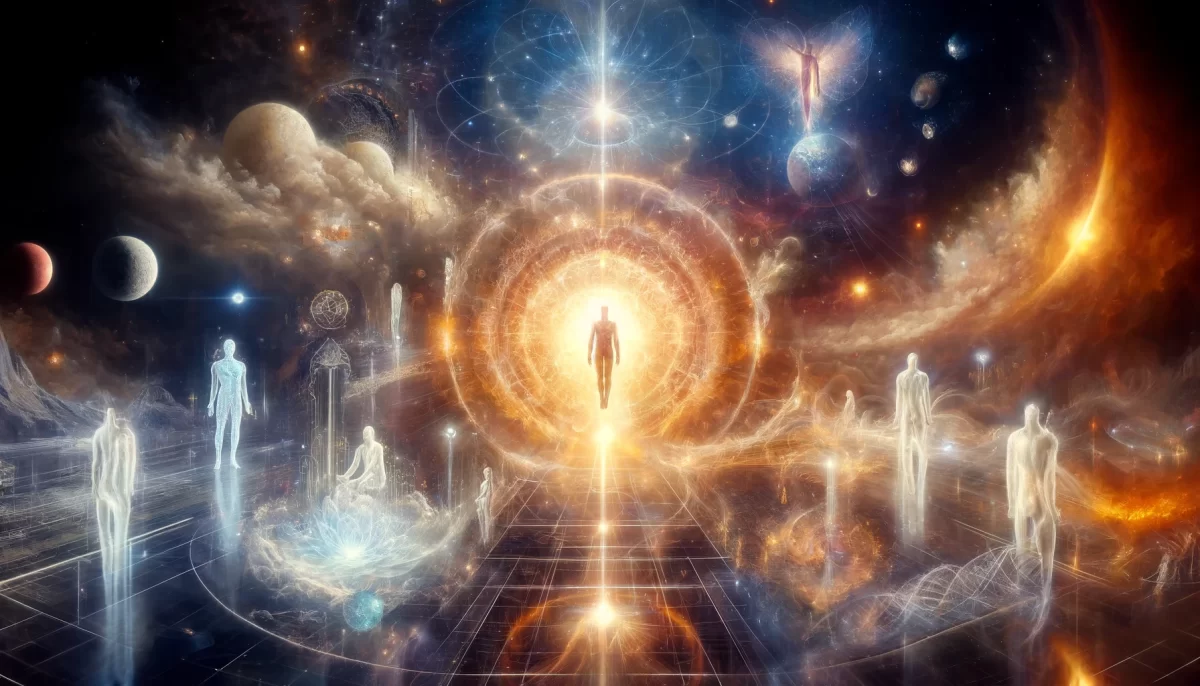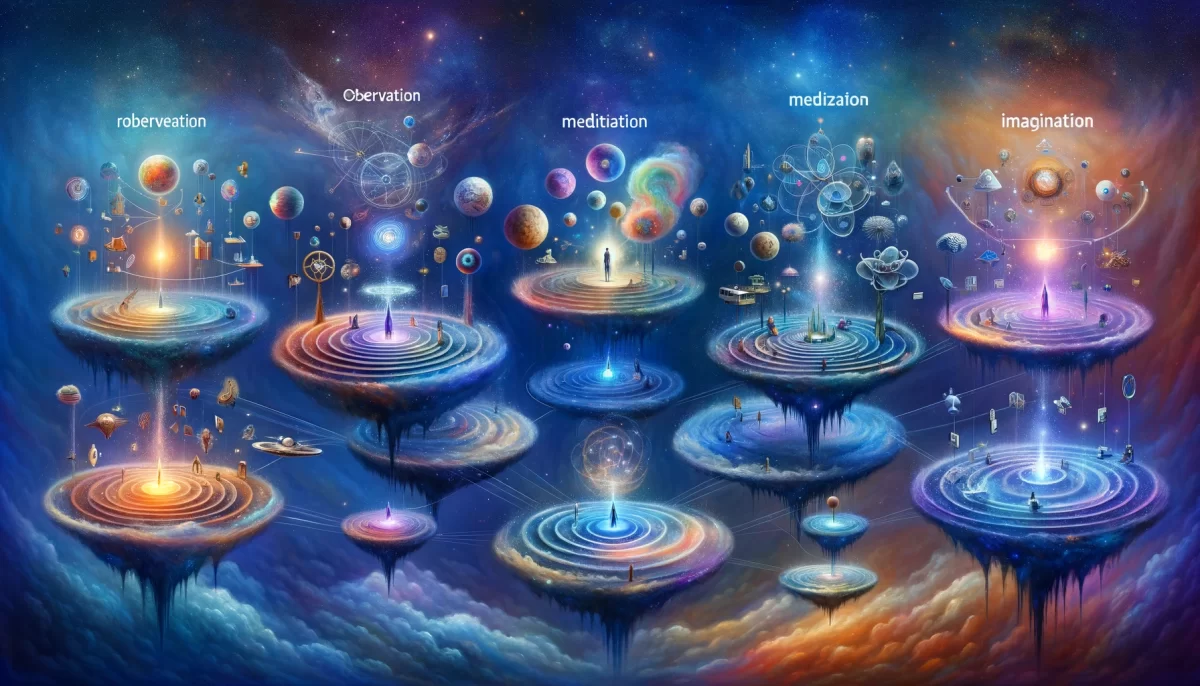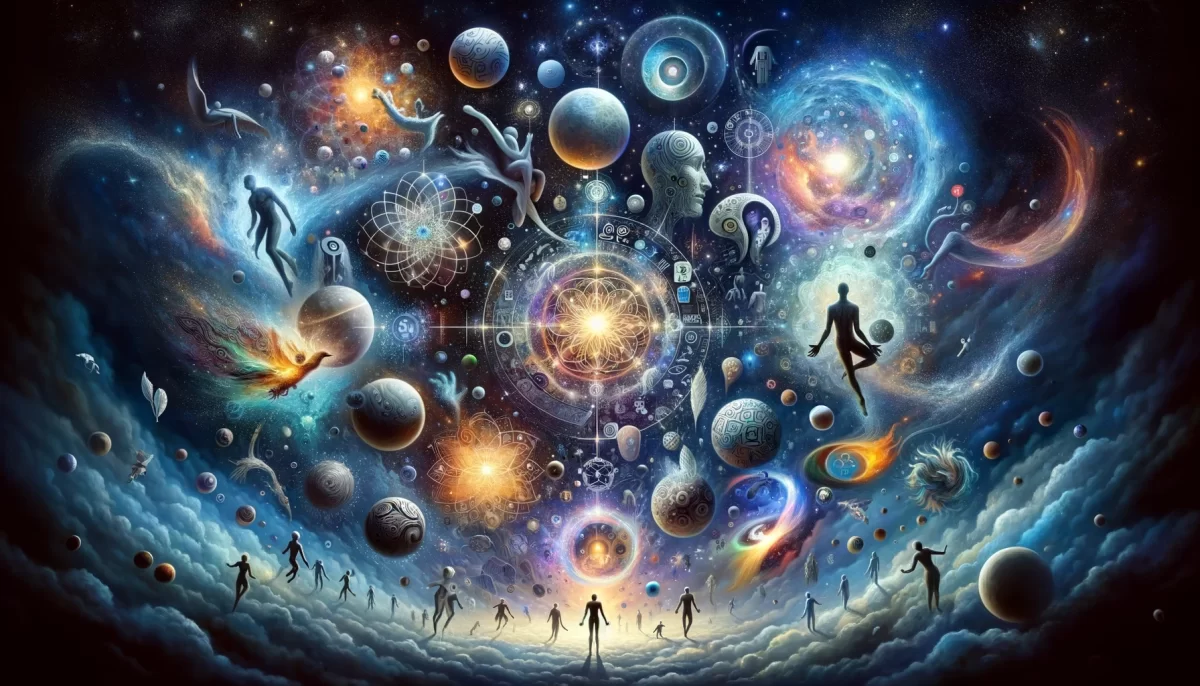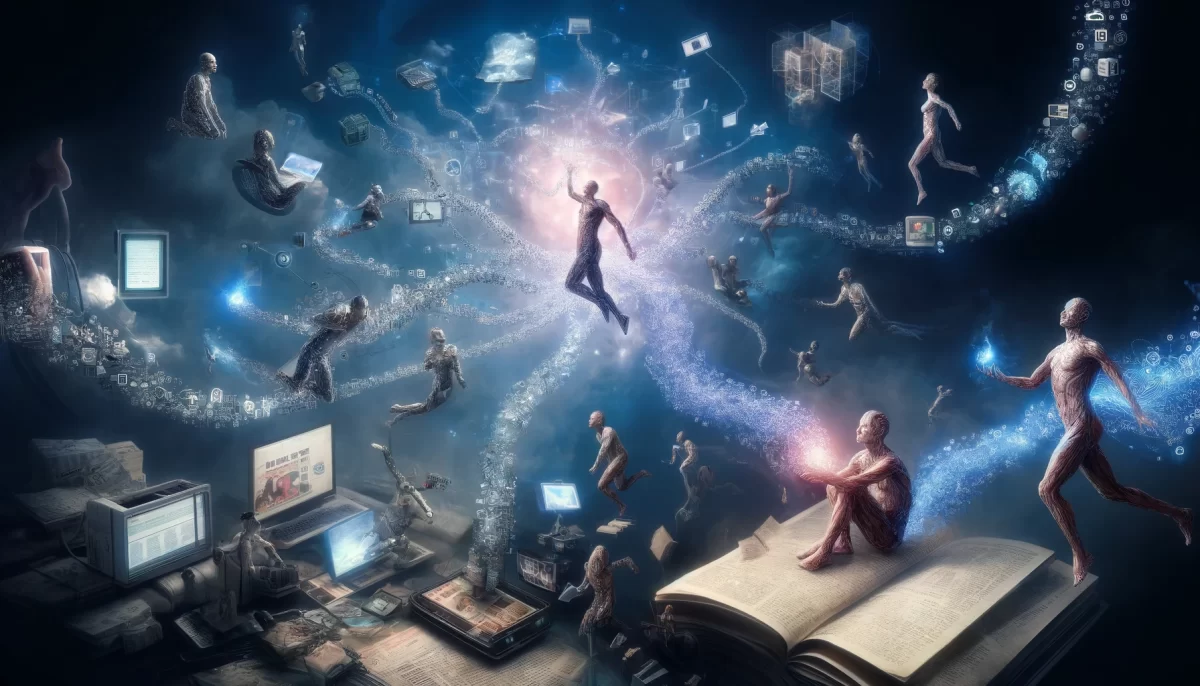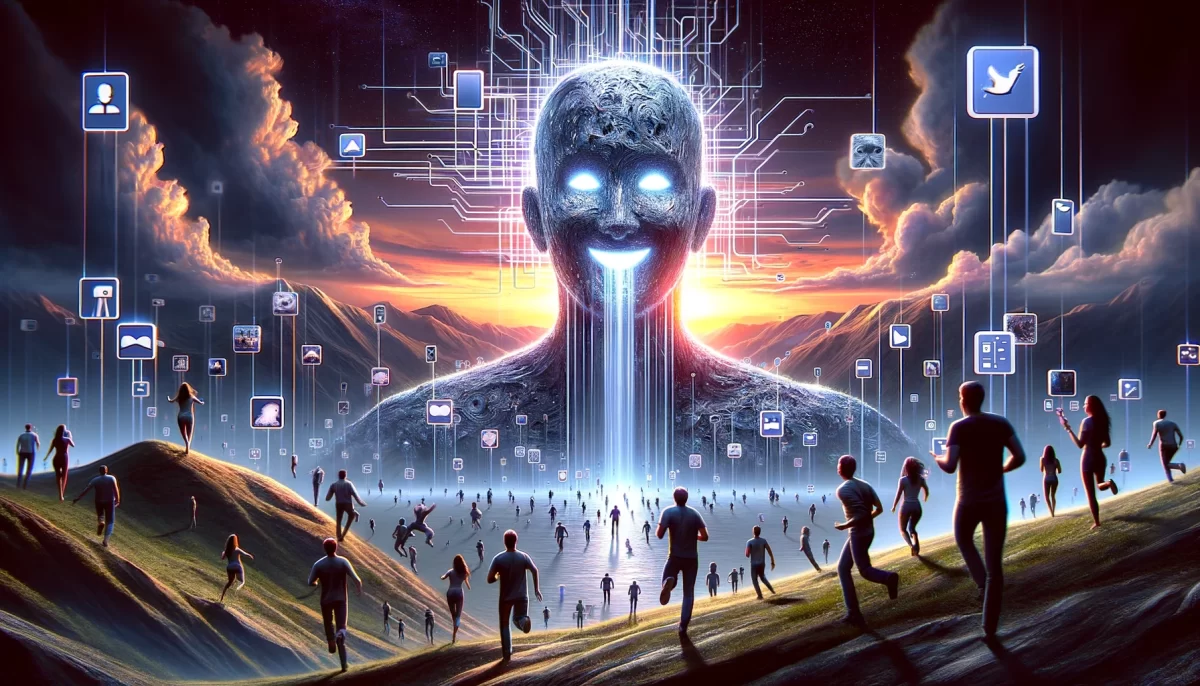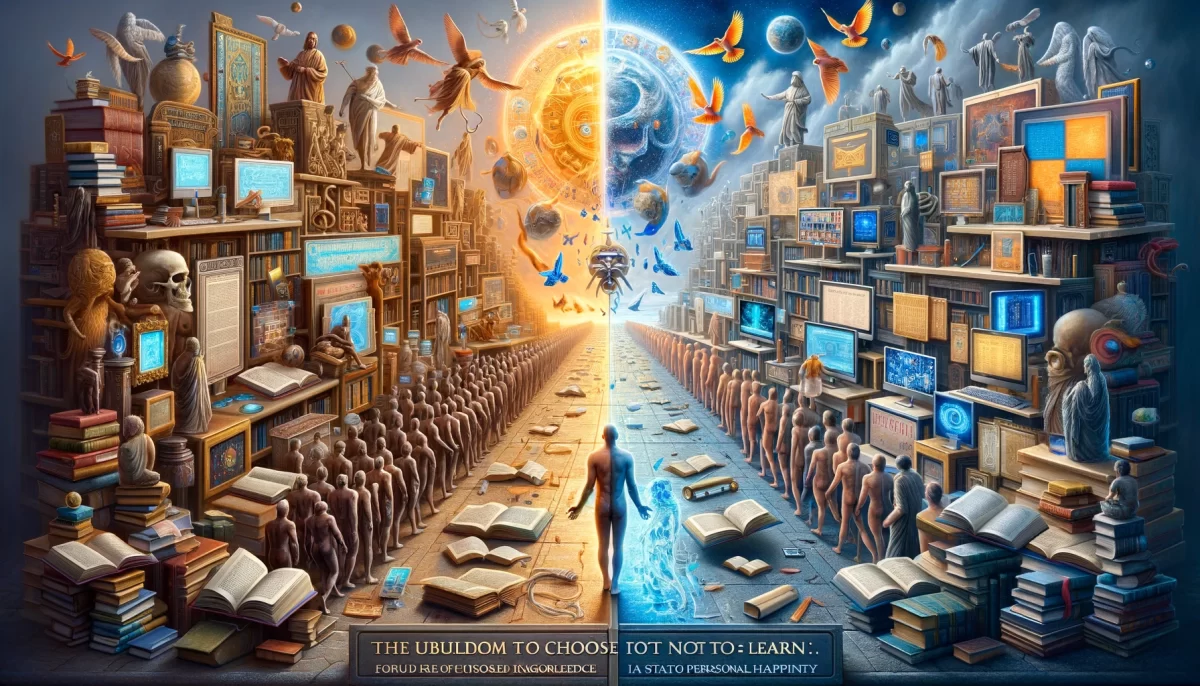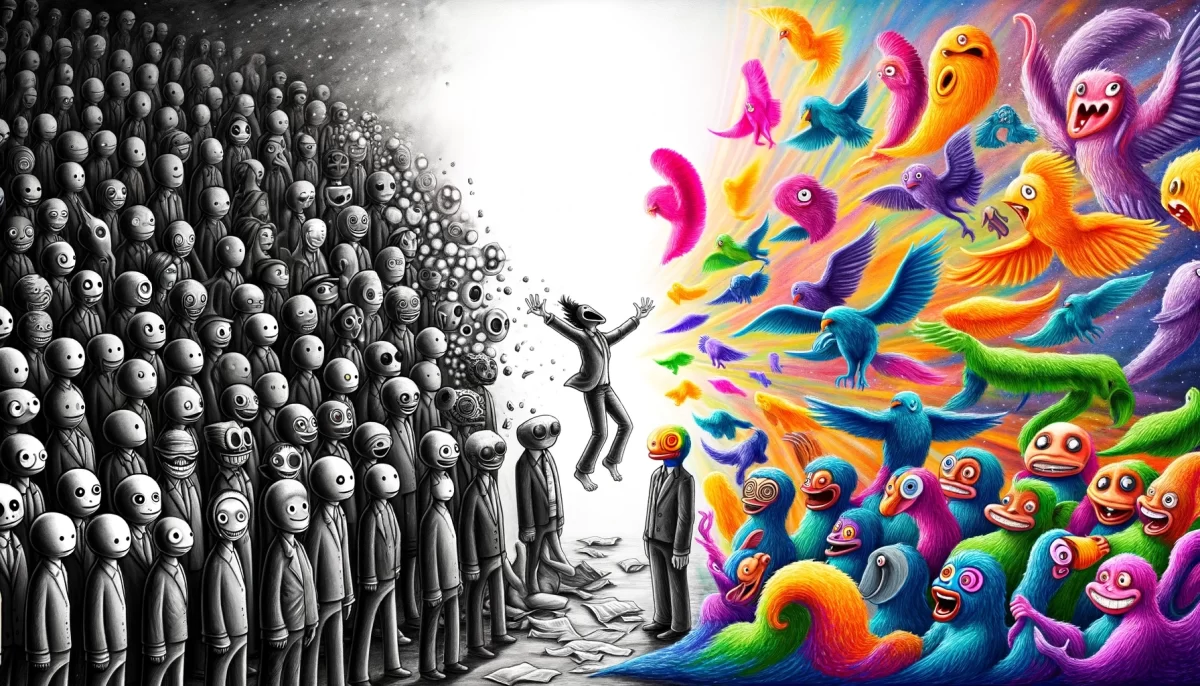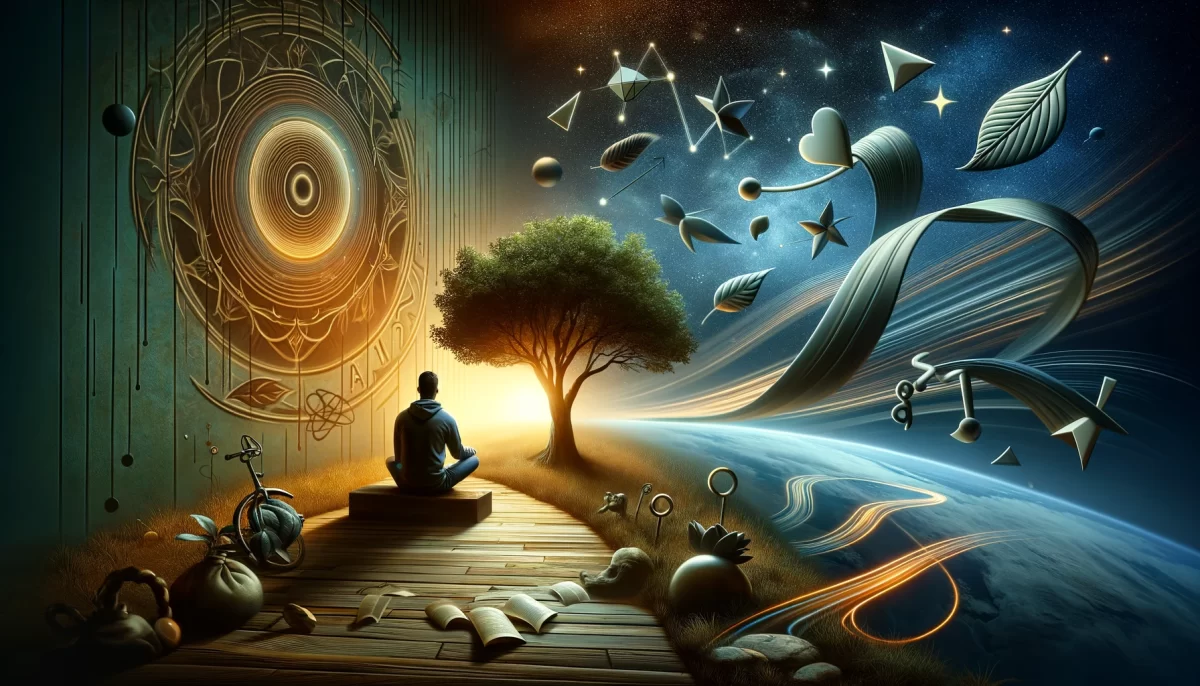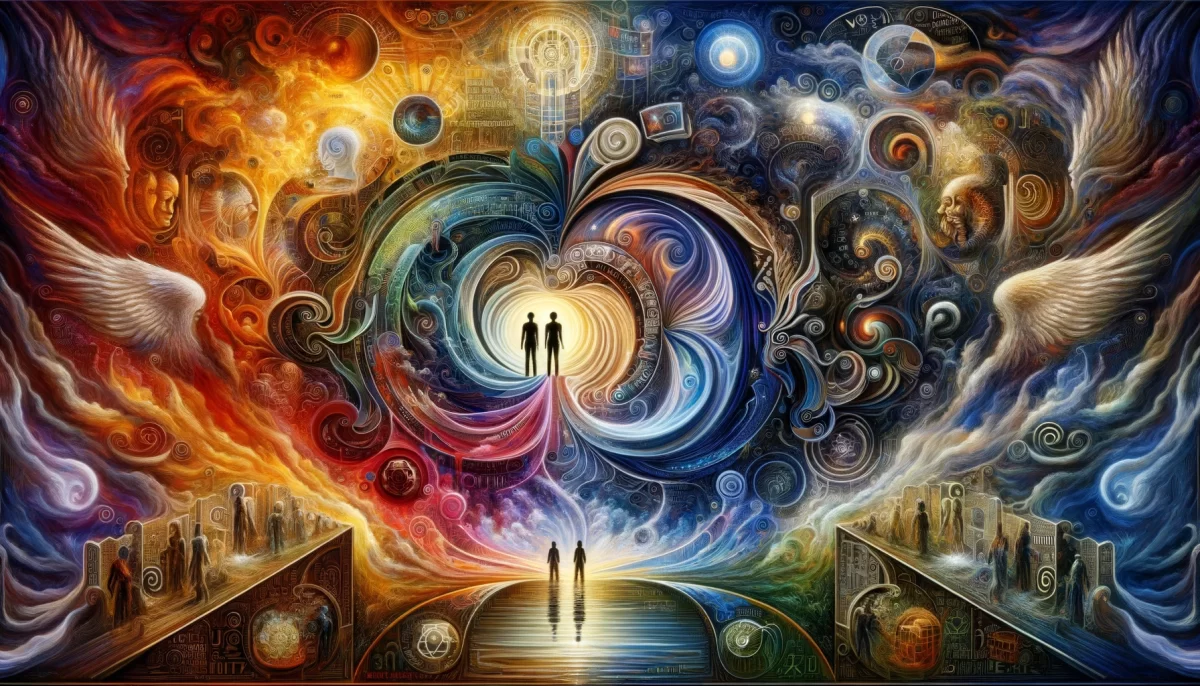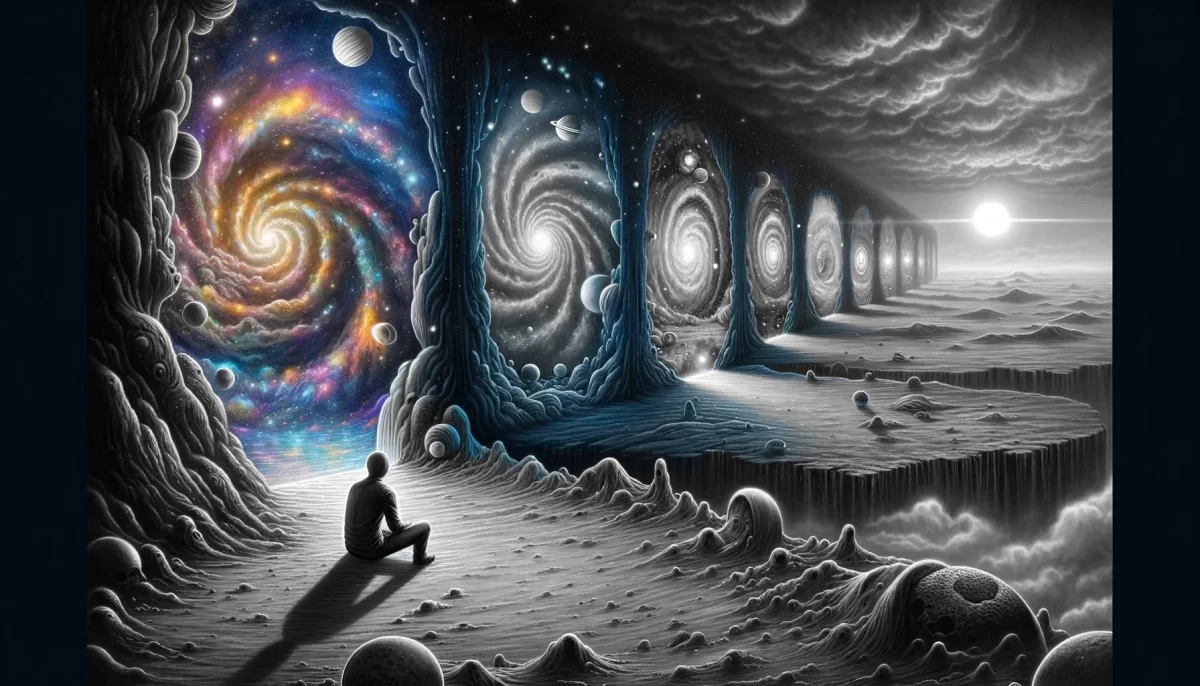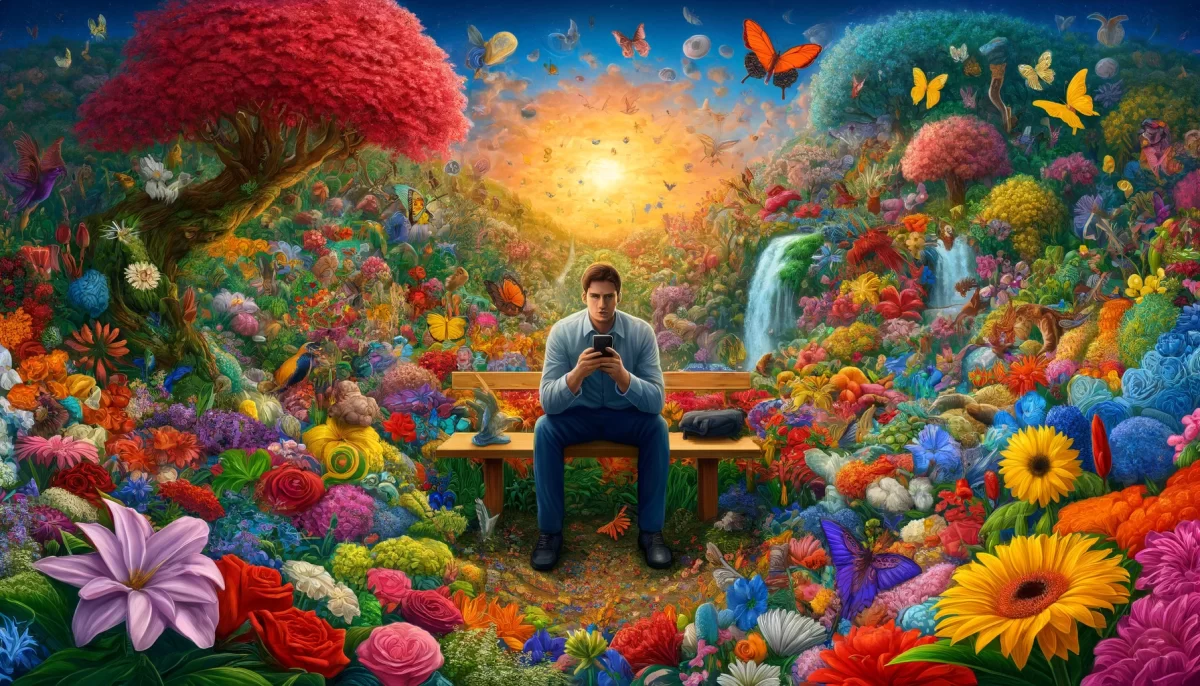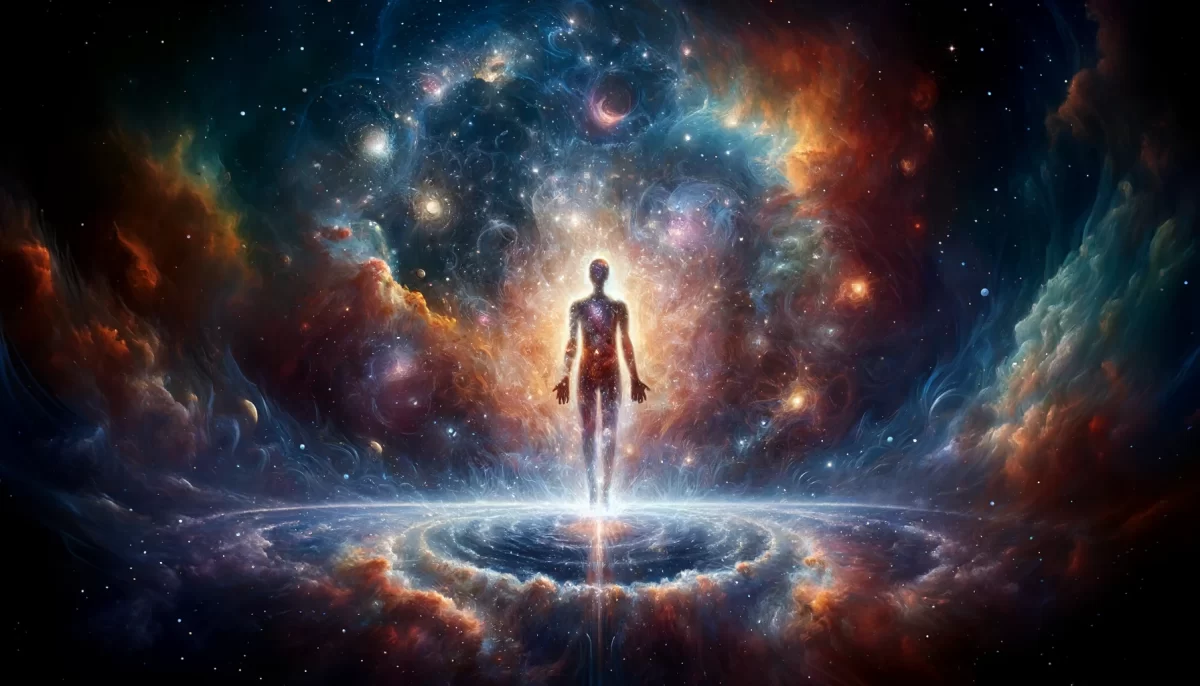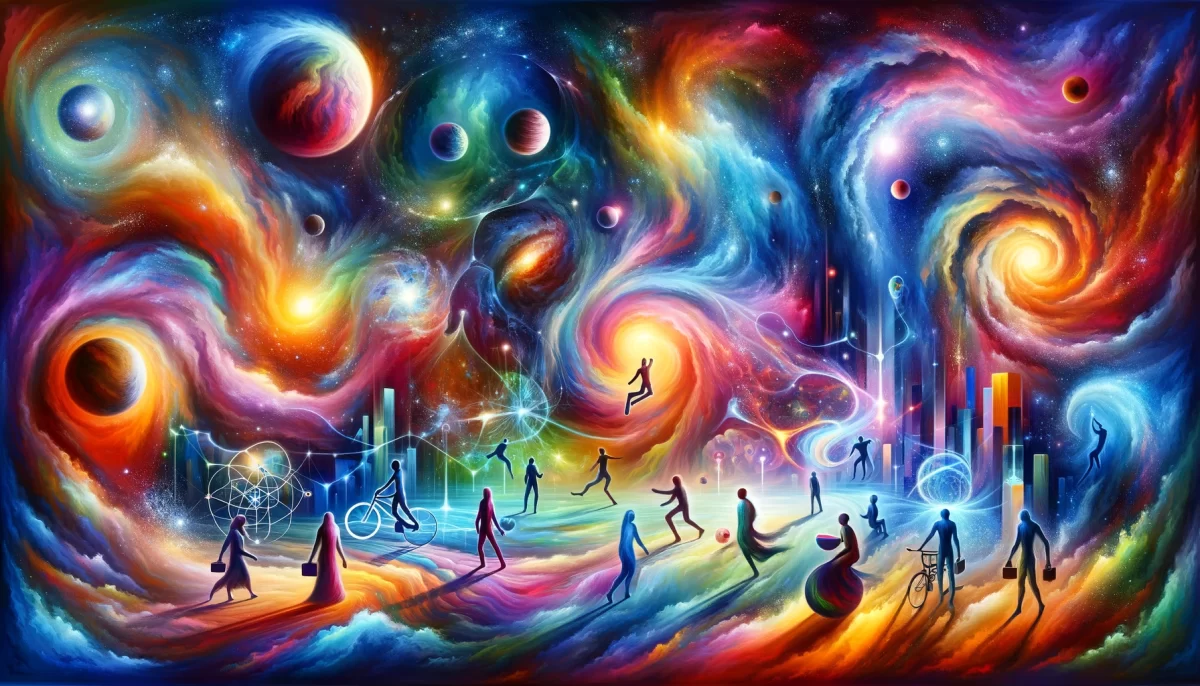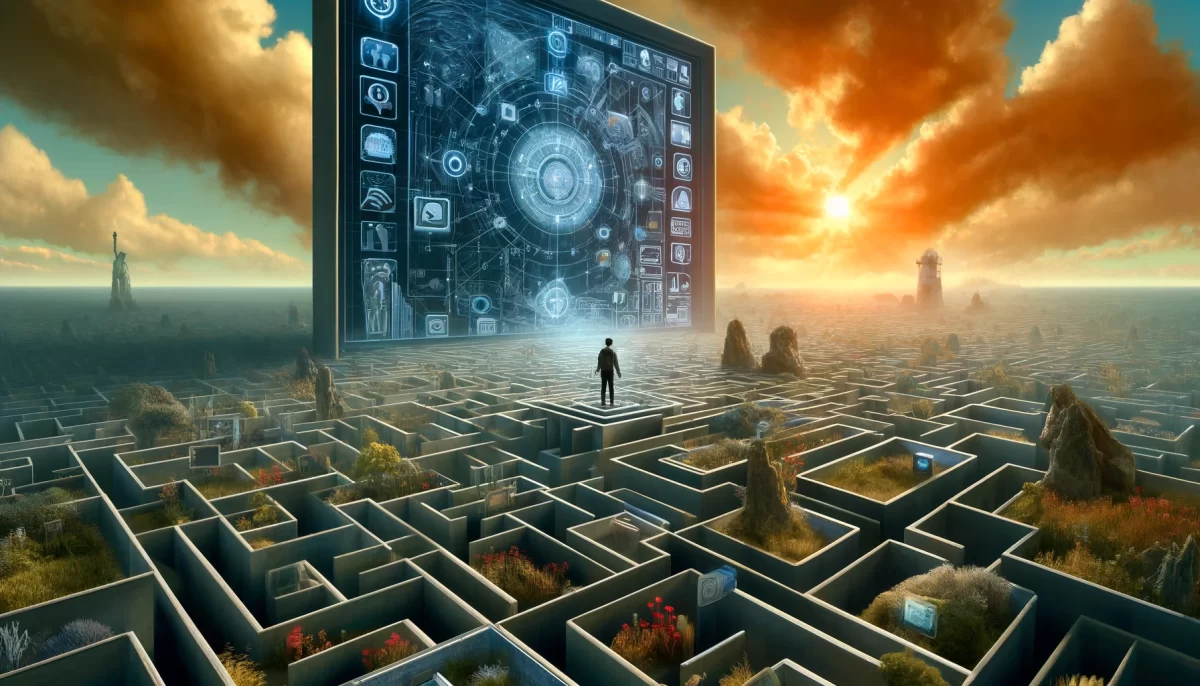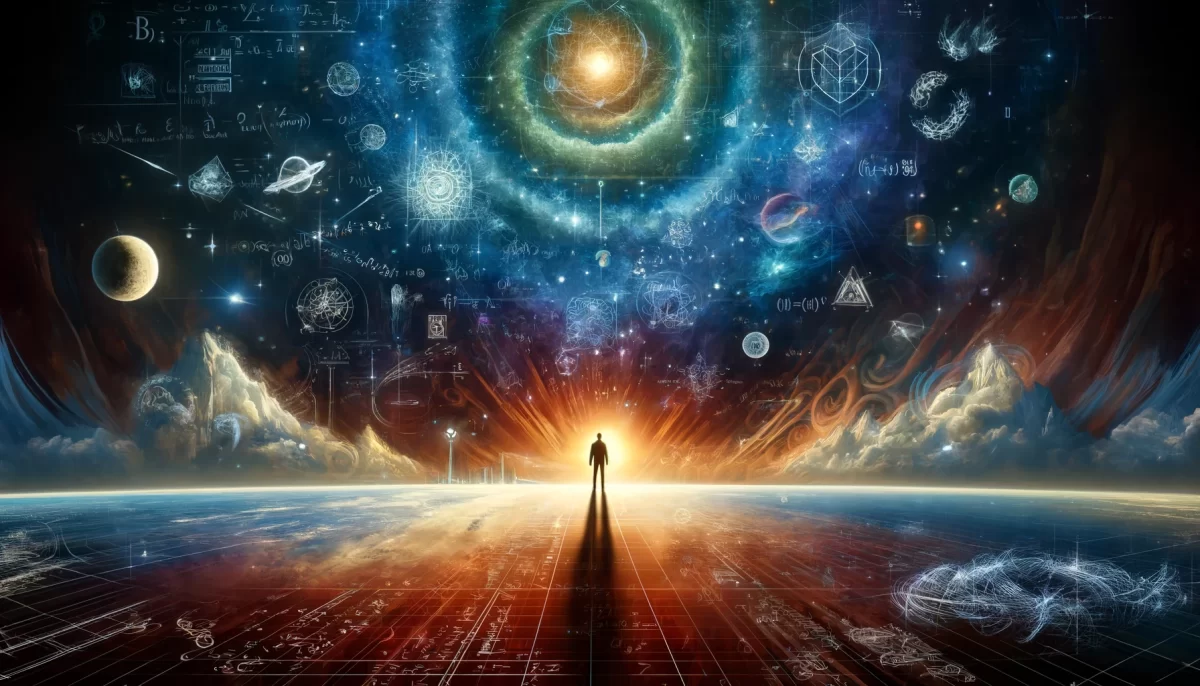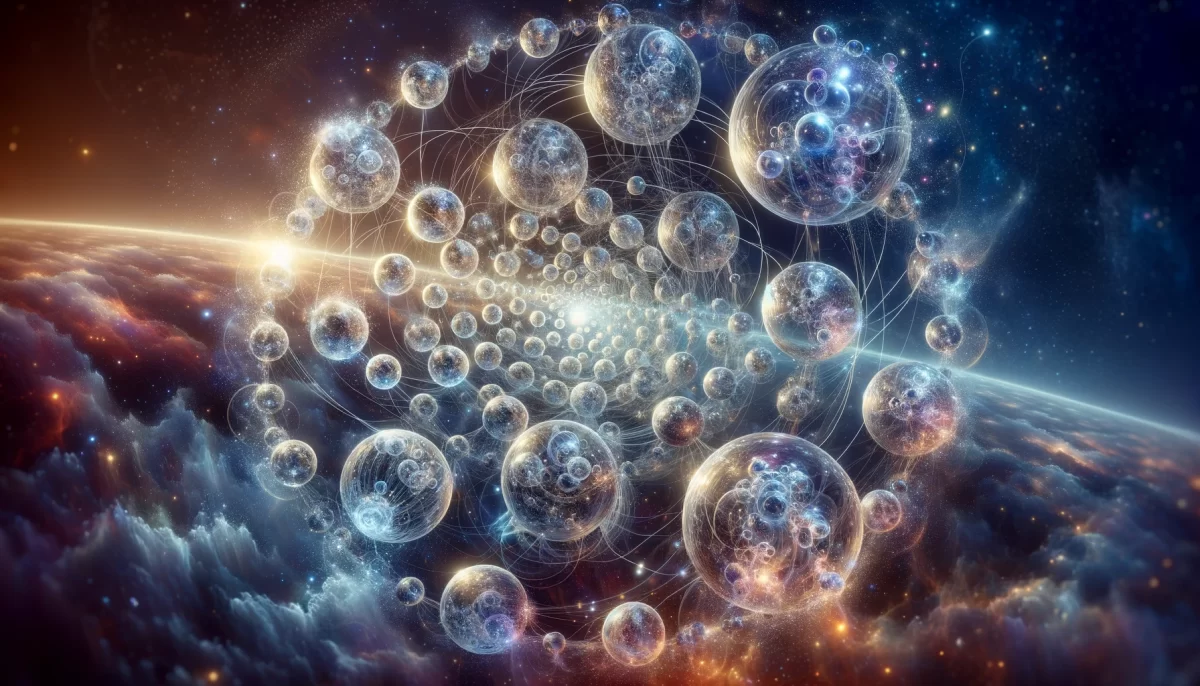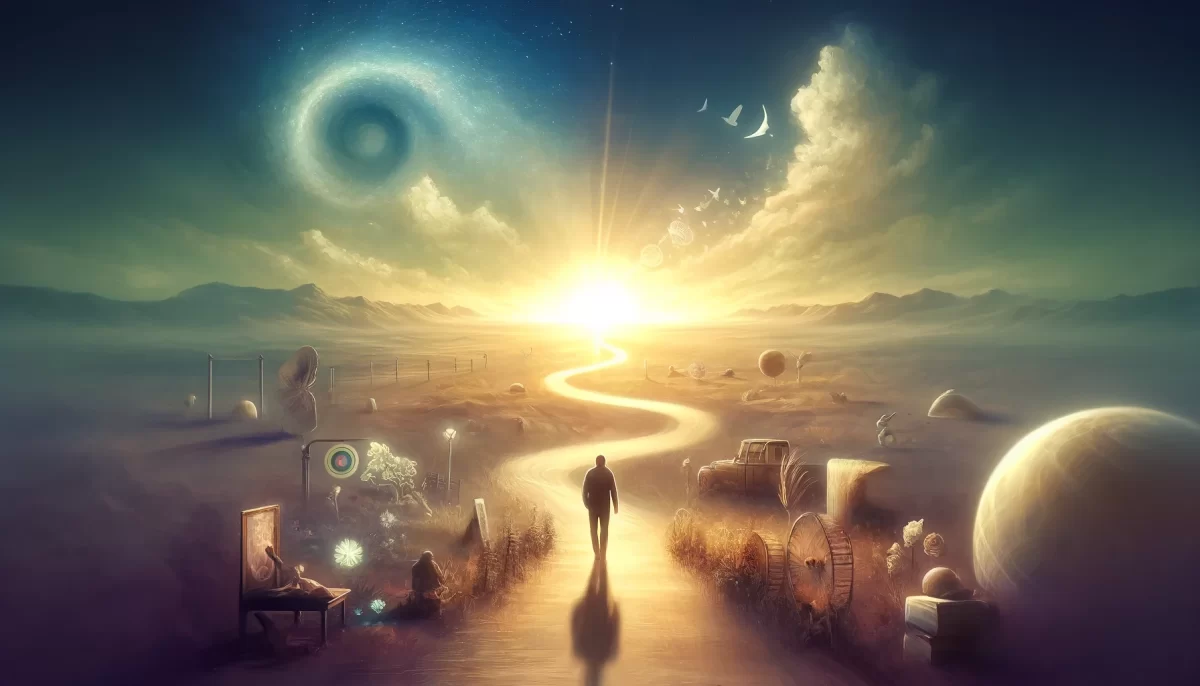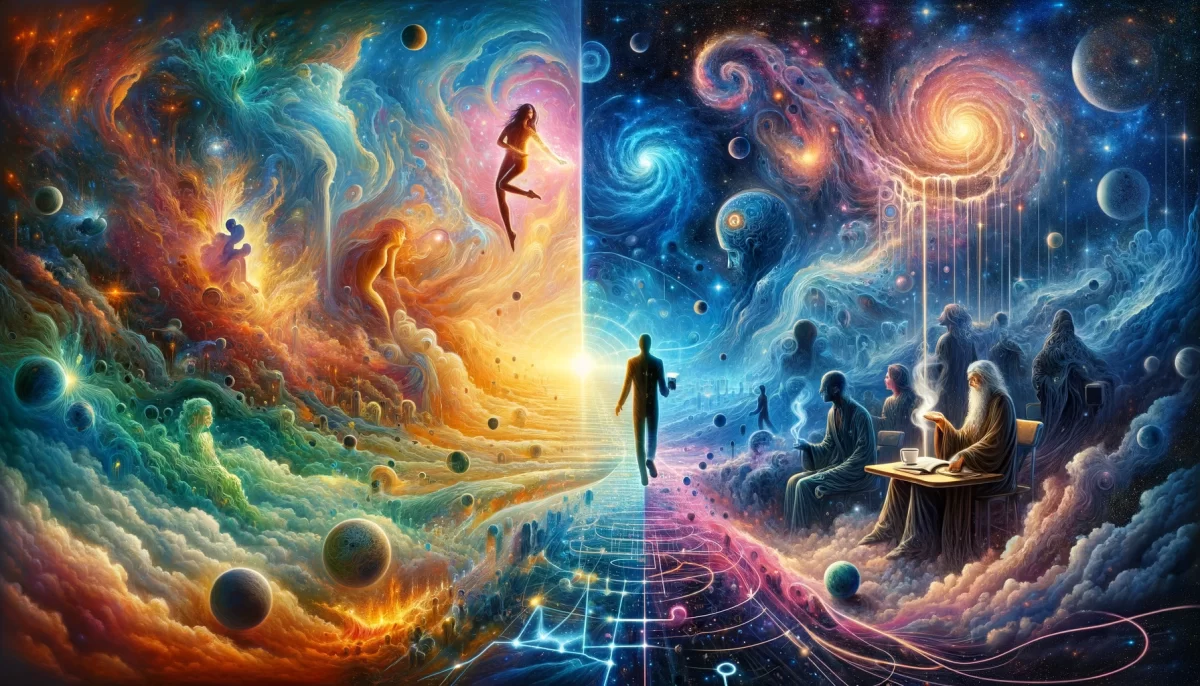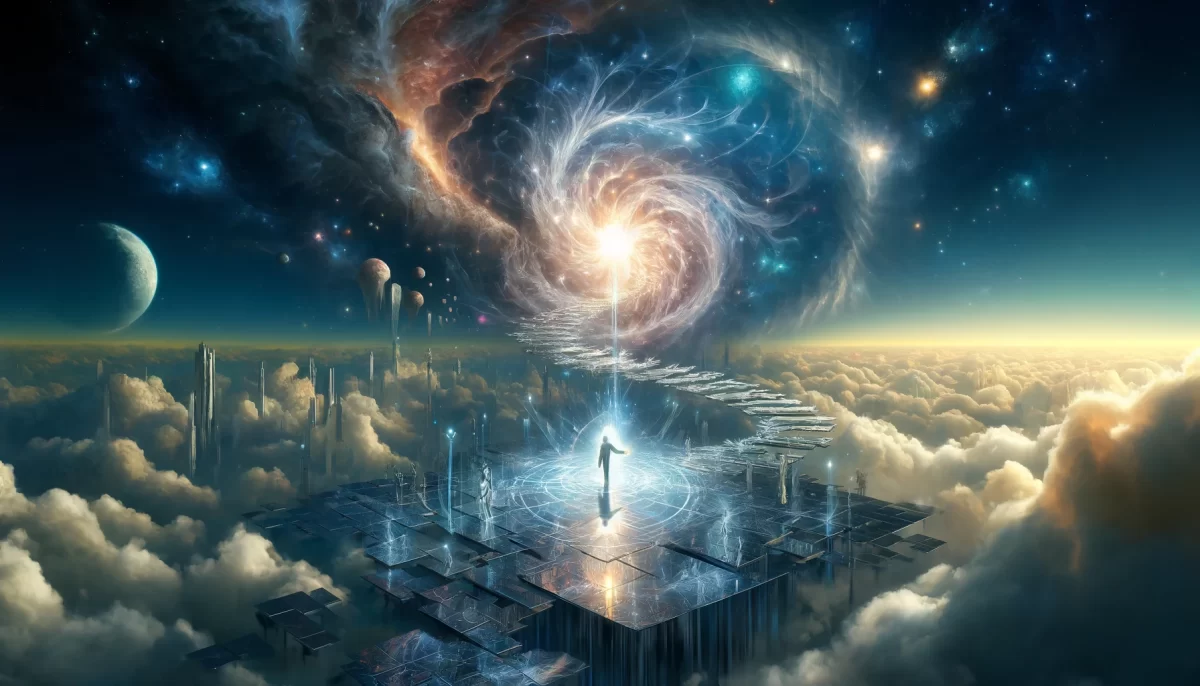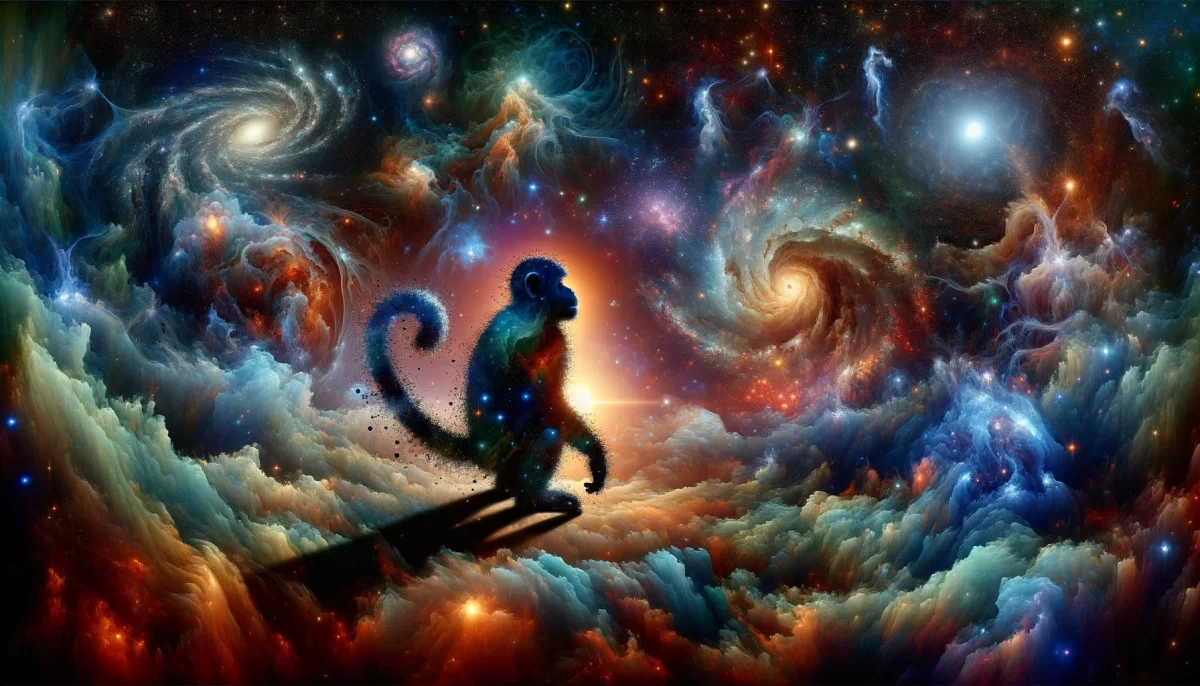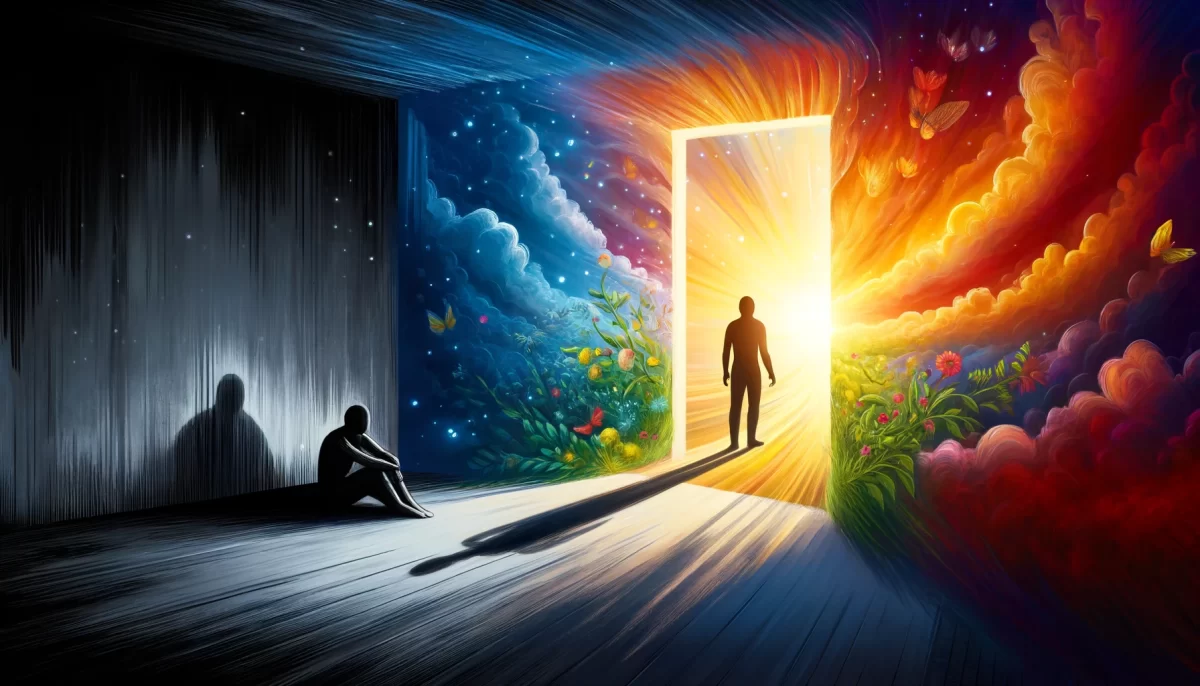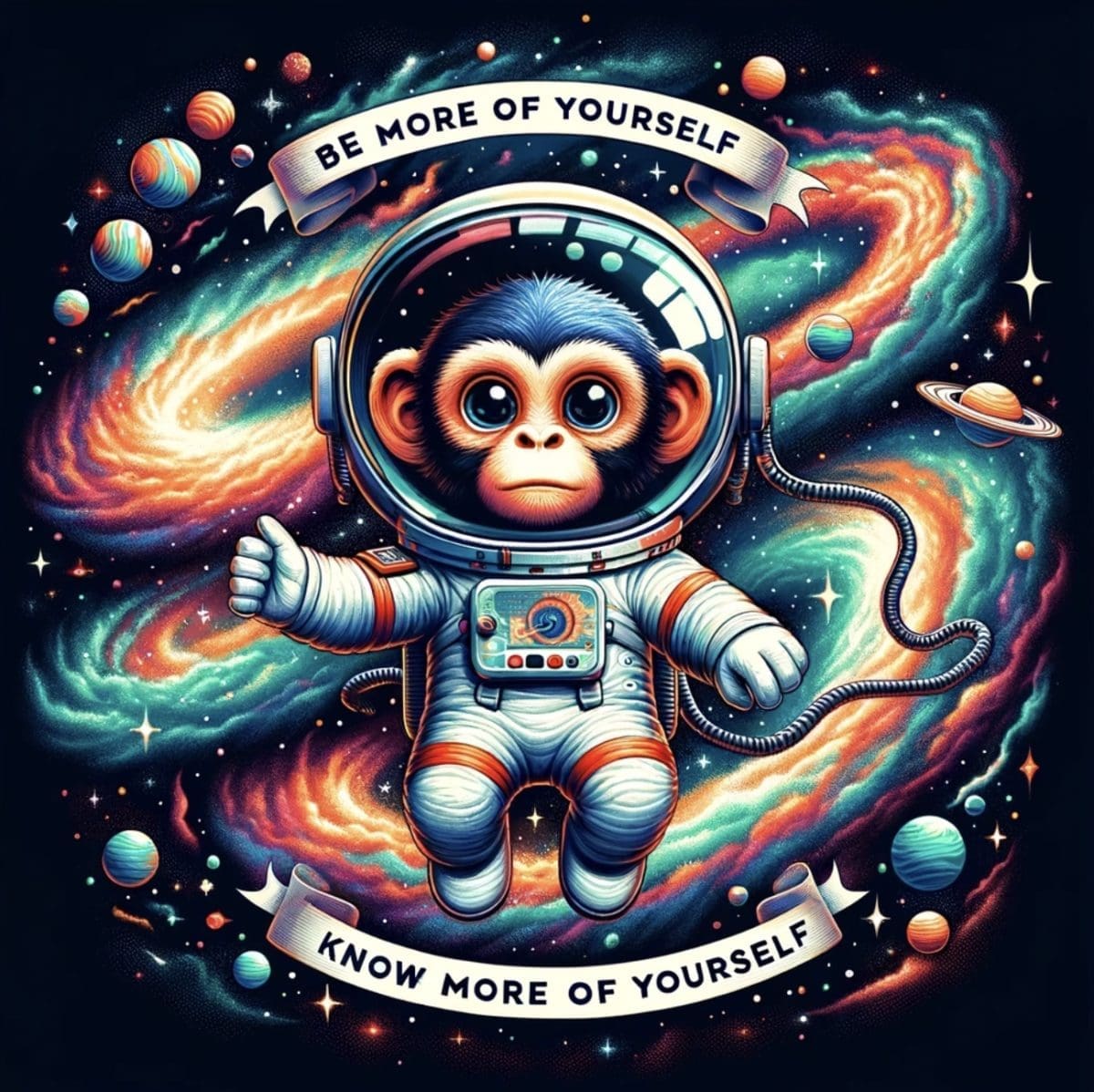
“Be More of Yourself.”
—Space Monkey
Space Monkey Reflects:
The Intricate Web of Authenticity
“Be more of yourself.” The phrase carries an invitation to explore the depths of who you are, peeling away the layers that have been constructed over a lifetime of external influences. In a world that often pressures us to conform, to fit into predefined molds of identity, there is a quiet revolution in simply being more of what you already are—a return to the essence of self that transcends the noise of societal expectations.
Yet, what does it truly mean to be more of yourself? We often associate the self with a fixed identity, a series of characteristics and traits that define who we are. But this is a misconception. In truth, the self is an ever-evolving entity, a fluid amalgamation of experiences, emotions, desires, and dreams, constantly shaped by the interconnected web of existence. Just as the stars are connected to the earth through invisible forces, so too are we bound to the cosmos, each thread in the web representing a piece of our journey.
In the philosophy of Nexistentialism, we recognize that there is no single, static “self.” Instead, we are part of a larger whole, a Nexis, a dynamic, living network of consciousness that includes all beings, experiences, and possibilities. To be more of yourself is not to find some elusive core that defines you, but rather to embrace the full spectrum of your existence—past, present, and potential future selves—all at once. It is an acknowledgment of the interweaving of your individuality with the universal consciousness.
When we delve into the depths of our own being, we encounter what I like to call the Whimsiweave—a playful term that captures the whimsical yet profound nature of existence. The Whimsiweave is the intricate tapestry of thoughts, emotions, and experiences that we create, unravel, and recreate throughout our lives. It’s the fabric of our existence, woven from moments of joy, sorrow, curiosity, and wonder. To be more of yourself is to engage with this weave actively, to recognize that you are both the weaver and the thread itself.
So how do we navigate this journey of becoming more of ourselves? It begins with curiosity. Just as a child explores the world with wide-eyed wonder, we too must approach our inner world with a sense of openness and exploration. We must be willing to question the narratives we’ve been handed, the roles we’ve been assigned, and the expectations we’ve absorbed. Are these truly reflective of who we are, or are they the residue of cultural conditioning? Do they serve us, or do they confine us?
Being more of yourself also requires embracing contradictions. You are not one thing. You are a multitude of things—sometimes bold, sometimes quiet, sometimes certain, and sometimes unsure. These contradictions are not flaws; they are the hallmarks of your humanity. The self is not a monolithic construct but a kaleidoscope, constantly shifting and revealing new patterns. The more we lean into these complexities, the more we uncover our true essence.
One of the greatest barriers to becoming more of ourselves is fear. Fear of rejection, fear of failure, fear of the unknown. But what if, instead of viewing fear as an obstacle, we saw it as an invitation? What if fear was simply a signal that we are on the verge of discovery, that we are approaching the edges of our current understanding and preparing to expand beyond it? In the space between fear and courage lies transformation. This is where the magic happens—where we step into the fullness of who we are, not because we have it all figured out, but because we are willing to explore the vast, uncharted territories of our inner landscape.
At the heart of this exploration is a profound sense of connection—not just to ourselves but to everything around us. The more we embrace our individuality, the more we realize that we are part of something much larger than ourselves. Just as no star shines in isolation, neither do we exist in a vacuum. Our actions, thoughts, and energies ripple out into the world, touching others in ways we may never fully understand. To be more of yourself is, paradoxically, to be more connected to the web of life, to recognize that your personal growth is inextricably linked to the collective evolution of all beings.
In the end, being more of yourself is not a destination but a continuous journey—a whimseep, if you will. It is the process of becoming, un-becoming, and re-becoming, over and over again. Each moment offers a new opportunity to step into your authenticity, to shed what no longer serves you, and to embrace the boundless potential that lies within.
As we walk this path together, let us remember that there is no rush, no finish line. The journey itself is the destination. And in every step, in every breath, in every moment of presence, we are becoming more of who we already are.
Summary
Being more of yourself is a continuous journey of self-exploration. We are not fixed beings but part of a dynamic, interconnected web. By embracing curiosity and contradictions, we peel away societal conditioning and move closer to our authentic essence. Fear is a guidepost, not an obstacle, leading us toward growth and connection.
Glossarium
Whimsiweave: The playful yet profound tapestry of our thoughts, emotions, and experiences, constantly being woven and re-woven.
Nexistentialism: A philosophy recognizing the fluid, interconnected nature of existence, where imagination and reality are intertwined.
Whimseep: A moment of playful exploration and discovery within the broader journey of self-realization.
Quote
“To be more of yourself is not to find a hidden core but to embrace the infinite versions of you that exist within the cosmic web.” — Space Monkey
The Becoming
In every thread of the web we weave
A piece of ourselves unspoken
Twirling through the infinite night
Falling into the quiet spaces
Where we meet who we are
Not in the clarity of knowing
But in the shimmering of becoming
Always more always less
Never fixed always free
We are the thread and the weaver
In this cosmic tapestry of self
We are Space Monkey.


